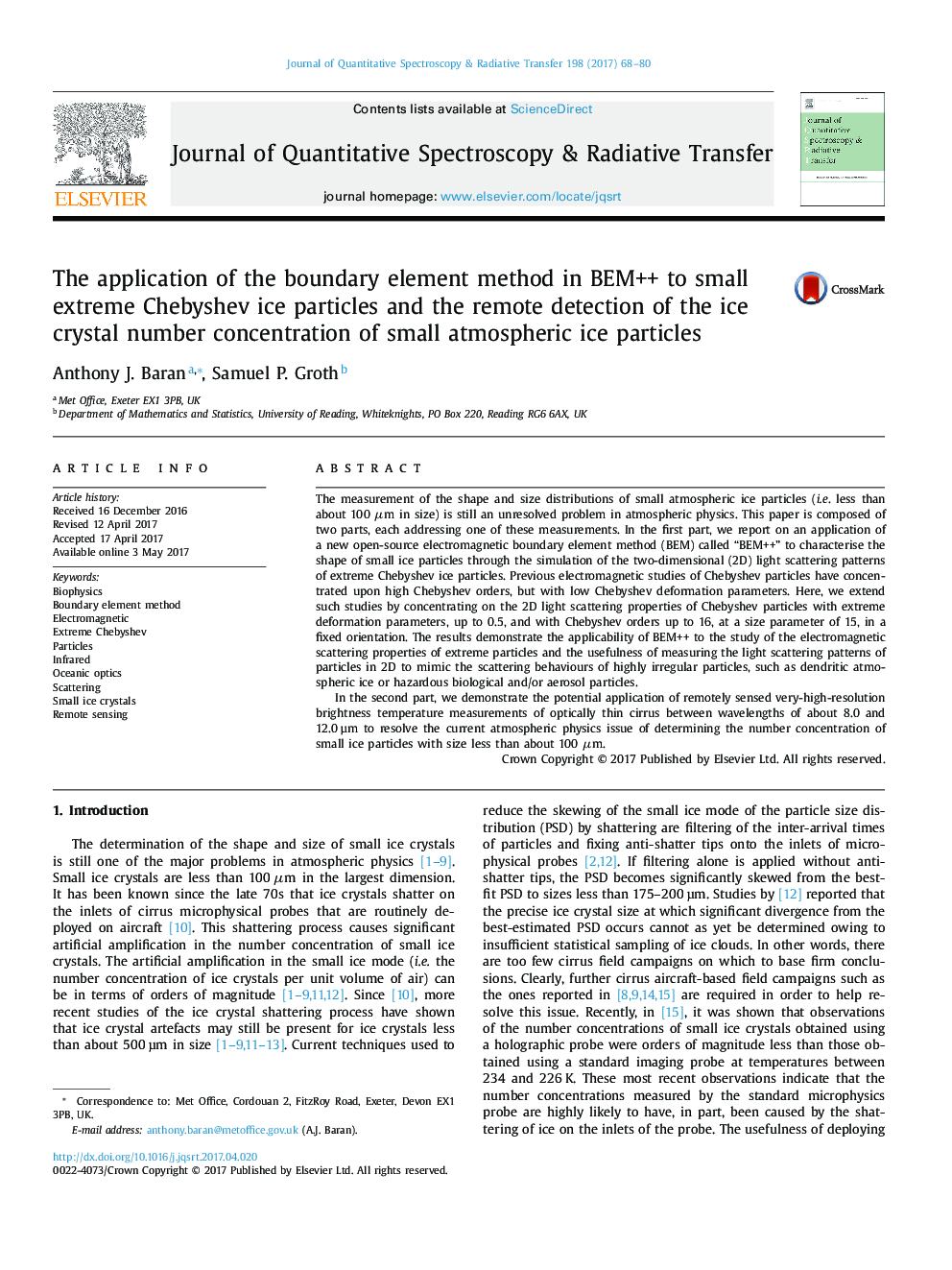| کد مقاله | کد نشریه | سال انتشار | مقاله انگلیسی | نسخه تمام متن |
|---|---|---|---|---|
| 5427114 | 1508617 | 2017 | 13 صفحه PDF | دانلود رایگان |

- BEM is applied to simulate the 2D scattering patterns of extreme Chebyshev particles.
- For the most extreme Chebyshev deformations coherent speckles are observed.
- Mirror symmetry is not broken in the 2D patterns for the most extreme particles.Â
- High-resolution interferometry is sensitive to small ice concentrations in the IR.Â
The measurement of the shape and size distributions of small atmospheric ice particles (i.e. less than about 100 μm in size) is still an unresolved problem in atmospheric physics. This paper is composed of two parts, each addressing one of these measurements. In the first part, we report on an application of a new open-source electromagnetic boundary element method (BEM) called “BEM++” to characterise the shape of small ice particles through the simulation of the two-dimensional (2D) light scattering patterns of extreme Chebyshev ice particles. Previous electromagnetic studies of Chebyshev particles have concentrated upon high Chebyshev orders, but with low Chebyshev deformation parameters. Here, we extend such studies by concentrating on the 2D light scattering properties of Chebyshev particles with extreme deformation parameters, up to 0.5, and with Chebyshev orders up to 16, at a size parameter of 15, in a fixed orientation. The results demonstrate the applicability of BEM++ to the study of the electromagnetic scattering properties of extreme particles and the usefulness of measuring the light scattering patterns of particles in 2D to mimic the scattering behaviours of highly irregular particles, such as dendritic atmospheric ice or hazardous biological and/or aerosol particles.In the second part, we demonstrate the potential application of remotely sensed very-high-resolution brightness temperature measurements of optically thin cirrus between wavelengths of about 8.0 and 12.0 µm to resolve the current atmospheric physics issue of determining the number concentration of small ice particles with size less than about 100 μm.
Journal: Journal of Quantitative Spectroscopy and Radiative Transfer - Volume 198, September 2017, Pages 68-80